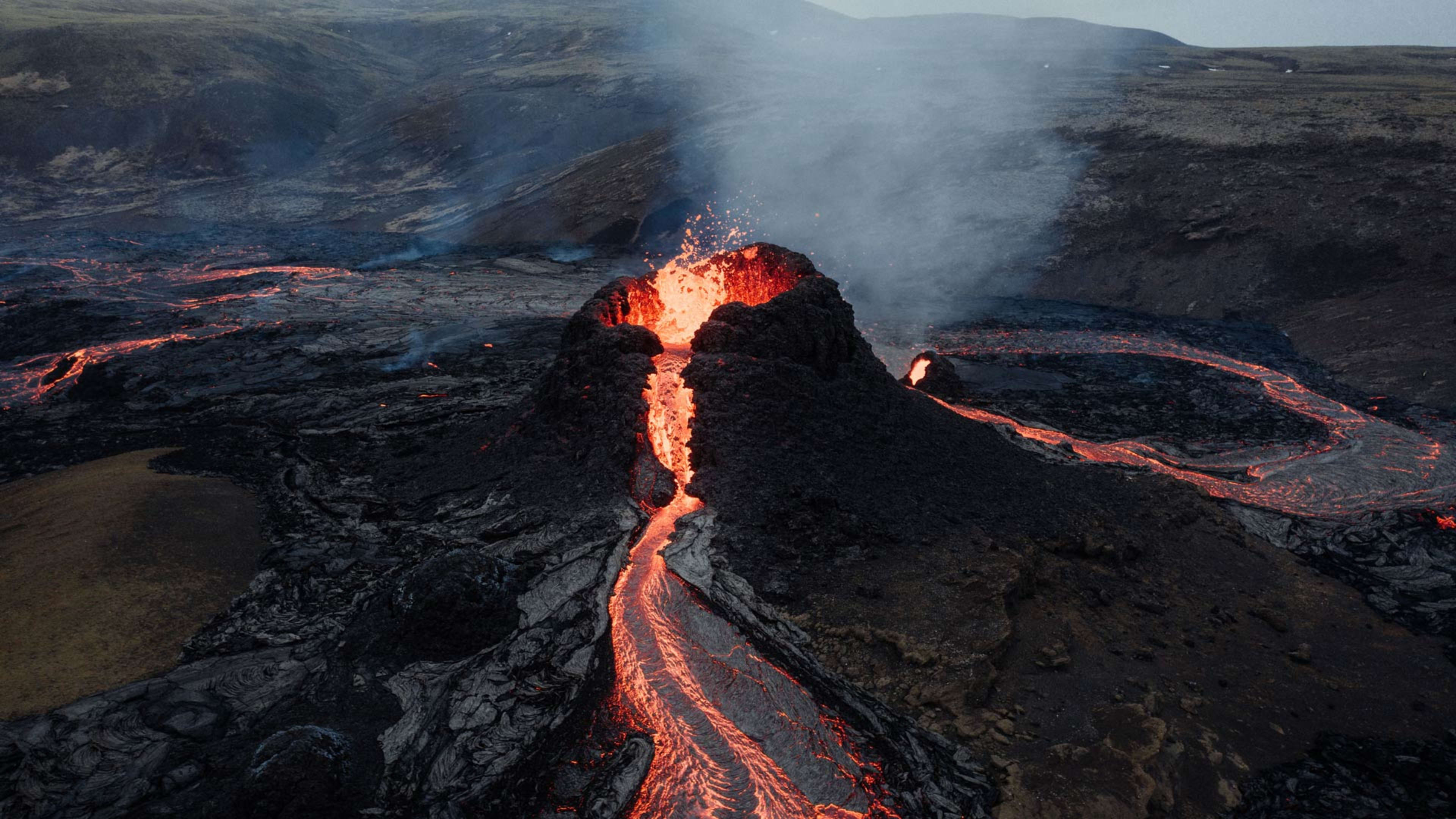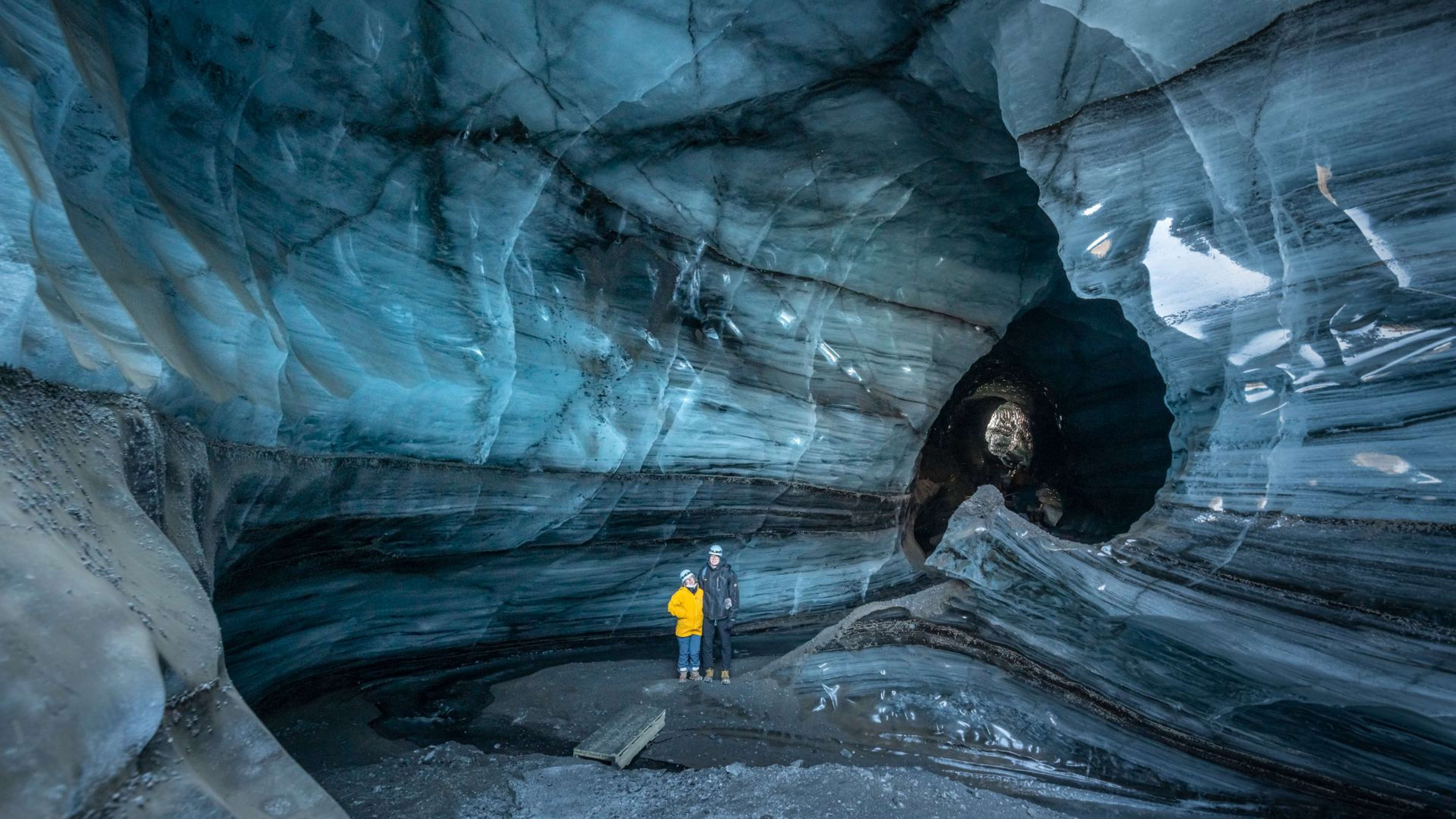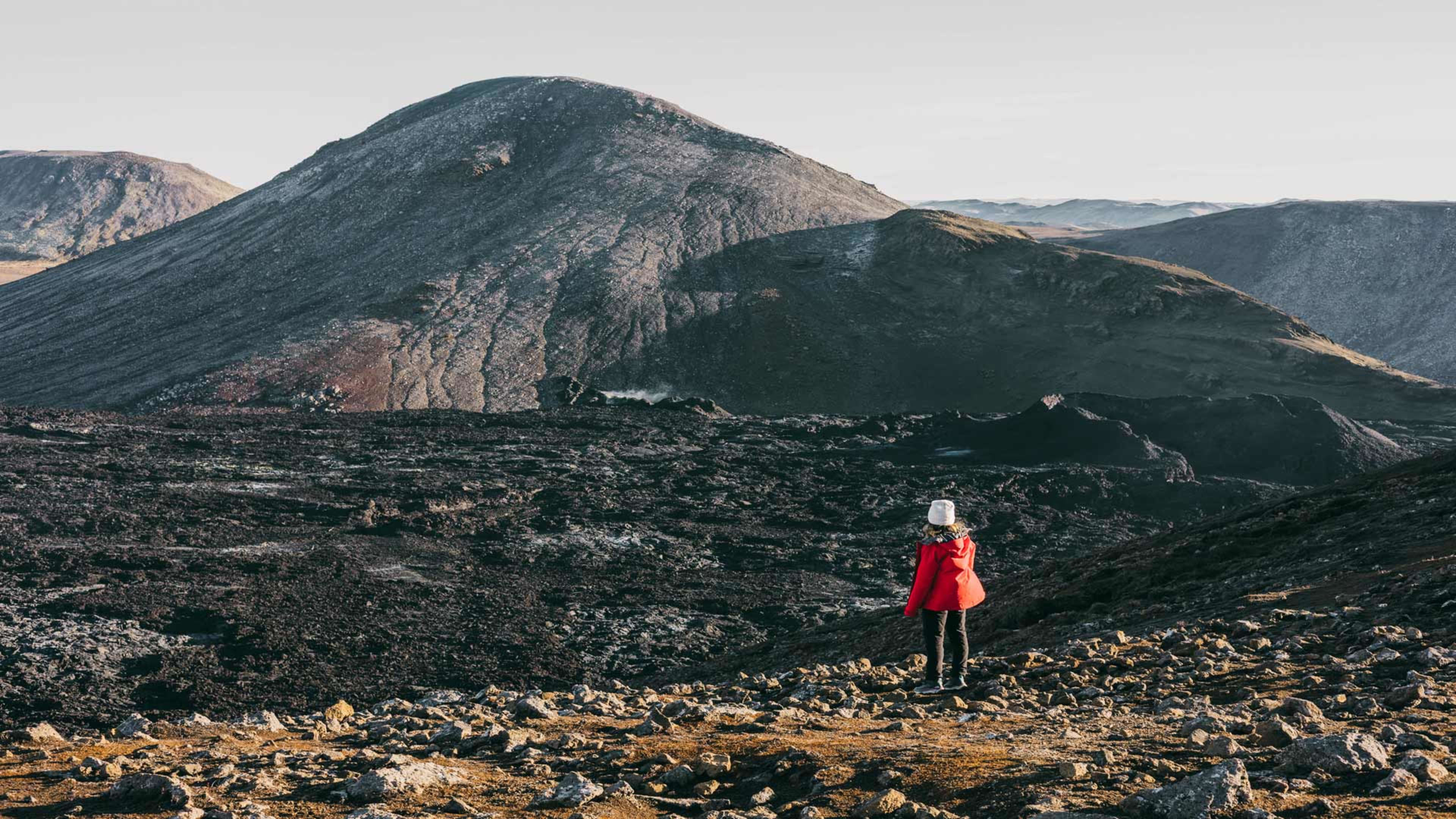Iceland is a land like no other. Here, you can explore some of our planet’s most exciting geological features: bubbling hot springs, mighty glaciers, and of course, volcanoes. Thanks to the tectonic plates below the Earth’s surface, the country is a hotbed of volcanic activity.
You’ll find both active and inactive (‘extinct’) volcanoes in Iceland. People from around the world travel here each year to visit these volcanic systems.
If you’ve ever wondered where to see active volcanoes in Iceland, you’ve come to the right place. We’ll help you unlock the island’s fiery secrets in this essential guide to volcanic activity in Iceland.
- Kickstart your adventure on an Iceland volcano tour.
How many active volcanoes are there in Iceland?

Iceland has about 130 volcanoes, and over 30 are currently active. An active volcano is one that's had a historically recent eruption or could erupt in the future. But keep in mind that just because a volcano is 'active', it doesn't necessarily mean it's currently erupting.
Volcano eruptions occur most often at the boundaries between tectonic plates. Iceland sits on top of the Mid-Atlantic Ridge, where the North American and Eurasian plates are pulling apart. This is why the country has so many volcanoes.
If you’re keen to see some tectonic action in person, take a trip to Þingvellir National Park. Here, you can walk or even snorkel between the tectonic plates!
Generally, a volcanic eruption happens in Iceland every 4 to 5 years. But they've been more common in the last few years, especially around the Reykjanes peninsula.
Eruptions on the Reykjanes peninsula
Since 2021, the Reykjanes peninsula in southwest Iceland has seen a massive increase in volcanic activity, starting with the Fagradalsfjall volcano eruption.
First, there were lots of little earthquakes – seismic activity like this is a classic sign that a volcano is about to erupt! The eruption began on 19 March when a huge fissure opened up.
The lava flow was pretty slow and oozy rather than explosive, but it lasted a long time. The earth didn’t close back up until September.
Fagradalsfjall erupted again in August 2022, just 1 km (0.6 mi) from the previous eruption site. This second volcanic event lasted 3 weeks.

In July 2023, Reykjanes saw even more action when the Litli-Hrútur mountain erupted. This site is part of the same volcanic system as Fagradalsfjall, and the eruption was connected to the previous ones.
A few months later, another eruption took place nearby, this time in Sundhnúkagígar.
Between March 2021 and November 2024, the Reykjanes peninsula experienced a total of 10 eruptions. While they made for some dramatic sights, they didn’t cause major disruptions.
As a precaution, the Icelandic government temporarily evacuated the nearby town of Grindavík. The Blue Lagoon also closed down a few times when lava flows reached nearby roads, making it unsafe to visit.
These eruptions have also dramatically changed the peninsula’s landscape. You can visit the Reykjanes Geopark on a day tour to learn more about how volcanoes have shaped Iceland and see the lava fields up close.
- Soak up some of the country’s highlights on a multi-day tour from Reykjavik.
- Related: Iceland volcano eruption –Your guide to Fagradalsfjall.
Other active volcanoes
Although the southwestern peninsula has seen the most action during the last few years, Iceland is home to several other active volcanoes. Some of these have also erupted in recent history.

One example is the Eyjafjallajökull eruption of 2010. The enormous ash clouds famously disrupted European flights for a month, leaving hundreds of air travelers stranded.
Nearby Katla has also been very active throughout Iceland’s history. Did you know its last eruption in 1918 was one of the biggest of the 20th century? It triggered a huge glacial flood (‘jökulhlaup’), which extended the south coast by about 4 km (2.5 mi).
You can visit the Katla ice cave, which sits above the volcano, on a guided tour for an unforgettable experience. You’ll see a mix of crystal-clear blue ice and streaks of black volcanic ash from past eruptions, creating mesmerizing natural patterns.

Another well-known active volcano you might have heard of is Hekla. It was nicknamed the ‘Gateway to Hell’ in medieval times because of how often it erupted! It’s less active these days and hasn’t erupted since 2000.
It's actually a popular hiking spot now. The trails take you across otherworldly landscapes shaped by centuries of eruptions.
- Explore Iceland’s volcanic landscapes on a self-drive tour.
- Learn more about the latest eruptions with our volcanic activity update.
Where to see active volcanoes in Iceland

So, where are the volcanoes in Iceland?
You can find active volcanoes in all regions of Iceland apart from the Westfjords. They run from southwest to northeast, right along the boundaries of the tectonic plates below the Earth’s surface.
Recent eruptions in Iceland have mostly been on the Reykjanes peninsula. This area is only 65 km (40 mi) from Reykjavík, so you can easily explore it on a day trip from the capital.
If you’d like to check out more of Iceland’s volcanic systems, you could follow the Volcanic Way on a self-drive tour. It’s an epic 700 km (435 mi) sightseeing route through some of the island’s most impressive active volcanoes. Many of them are clustered around the south coast.
On your journey, you can also see landscapes unique to volcanic areas, like steaming geysers and enormous lava fields.

Most people take at least 8 days to complete the Volcanic Way in one direction. This gives you enough time to soak in your environment, enjoy day hikes, and snap photos of the jaw-dropping sights.
- Complete the Volcanic Way on a summer tour of Iceland.
- Check out this in-depth guide to Iceland’s volcanoes and geothermal activity.
How to visit active volcanoes in Iceland
Visiting Iceland’s active volcanoes is a thrilling experience. Volcano tours are one of the best ways to see these volcanic wonders.
You can take trips to the volcanoes themselves or visit other volcanic features. Relax in geothermal spas and hot springs, explore ancient lava caves, or stroll along famous black sand beaches like Reynisfjara.

Guided group tours are a great way to see volcanoes. A local guide will take you and a group of fellow adventurers to top attractions and off-the-beaten-path spots. Plus, they’ll give you a fascinating insight into Iceland’s volcanic activity.
For more flexibility, a self-drive tour could be the perfect choice. We’ll arrange your trip for you, including car hire, accommodation, and an exciting sightseeing route. You’ll then be free to explore Iceland and stop at different volcanic sites along the way.
Short on time? No problem. On a multi-day tour, you’ll stay in downtown Reykjavík and take day trips to nearby volcanic hotspots, including the Reykjanes peninsula. You’ll get a crash course in local geology and see recent eruption sites without having to organize taxis or use public transport.

If you’re looking for something more intimate, a privately guided tour is for you. Private trips give you a really personal experience, and your expert guide will share their knowledge of Iceland’s hidden gems with you.
Or why not immerse yourself in nature on a camping trip? Picture yourself waking up to Iceland’s mind-blowing sights every day.
Whichever type of tour you choose, be prepared for an unforgettable journey into the heart of Iceland’s volcanic systems.
- Get inspo for your next trip with these Iceland vacation ideas.
- Related: How to get around Iceland.
Explore Iceland's volcanoes with Iceland Tours
Visit Iceland and discover the fiery wonders of its explosive volcanoes. Marvel at recent eruption sites, check out ancient craters, or hike through dramatic volcanic areas.
Ready to see some active Iceland volcanoes for yourself? We can help! Our local travel team is based in Reykjavík and knows the country inside out.
We'll organize your vacation from start to finish, including places to stay, local transport, and an action-packed itinerary.
Dive into these volcano tours and find your next volcanic adventure. All it takes to lock in your trip is a 5% deposit.

